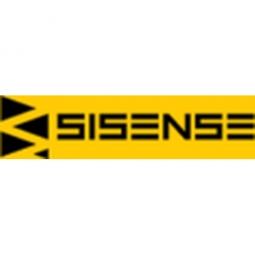公司规模
Large Corporate
地区
- America
国家
- United States
产品
- Sisense
技术栈
- ERP System
- Excel
实施规模
- Enterprise-wide Deployment
影响指标
- Productivity Improvements
- Customer Satisfaction
- Employee Satisfaction
技术
- 应用基础设施与中间件 - 数据可视化
- 分析与建模 - 预测分析
- 应用基础设施与中间件 - 数据交换与集成
适用行业
- 零售
- 消费品
适用功能
- 商业运营
- 销售与市场营销
- 仓库和库存管理
用例
- 库存管理
服务
- 系统集成
- 培训
关于客户
Founded in 1954, ES Originals is one of the longest surviving footwear importers in the US, pioneering imports from Asia. The company has a long history and has evolved its systems over time to meet various requirements. ES Originals operates a homegrown ERP system and deals with a large volume of reports, which has become a logistical challenge. The company brought in Software Analyst Ahuva Shabtai to address these issues and improve their reporting processes. ES Originals is a large organization with over 1,000 employees, and it operates in the retail and consumer goods industries.
挑战
ES Originals faced significant issues with disparate and disconnected data, with nearly 1000 reports running against their ERP system. This led to logistical challenges, as reports were static and required new reports for any additional fields or selection criteria. The company needed a unified and standardized reporting system to streamline the process and reduce the number of reports. Additionally, salespeople had to bring hard copies of reports to client sites due to unreliable internet connections, and data from partners came in different formats, complicating the reporting process.
解决方案
Ahuva Shabtai leveraged Sisense, a BI tool that ES Originals already owned but had not deployed, to address the reporting challenges. She conducted an audit of the existing reports, identifying nearly 1000 reports and analyzing how many could be combined with filtering options. She also addressed the issue of data ingestion from partners by standardizing the data formats. Ahuva worked closely with internal IT staff and utilized Sisense support and training materials to implement the solution. She focused on creating graphic representations of data and ensuring that everyone was reading from a single source of truth. This involved addressing discrepancies in reports and identifying unused or outdated reports. The implementation also included adding timing to inventory reports, allowing users to see current and future availability based on procurement information.
运营影响
数量效益

Case Study missing?
Start adding your own!
Register with your work email and create a new case study profile for your business.
相关案例.
.png)
Case Study
Improving Vending Machine Profitability with the Internet of Things (IoT)
The vending industry is undergoing a sea change, taking advantage of new technologies to go beyond just delivering snacks to creating a new retail location. Intelligent vending machines can be found in many public locations as well as company facilities, selling different types of goods and services, including even computer accessories, gold bars, tickets, and office supplies. With increasing sophistication, they may also provide time- and location-based data pertaining to sales, inventory, and customer preferences. But at the end of the day, vending machine operators know greater profitability is driven by higher sales and lower operating costs.

Case Study
Improving Production Line Efficiency with Ethernet Micro RTU Controller
Moxa was asked to provide a connectivity solution for one of the world's leading cosmetics companies. This multinational corporation, with retail presence in 130 countries, 23 global braches, and over 66,000 employees, sought to improve the efficiency of their production process by migrating from manual monitoring to an automatic productivity monitoring system. The production line was being monitored by ABB Real-TPI, a factory information system that offers data collection and analysis to improve plant efficiency. Due to software limitations, the customer needed an OPC server and a corresponding I/O solution to collect data from additional sensor devices for the Real-TPI system. The goal is to enable the factory information system to more thoroughly collect data from every corner of the production line. This will improve its ability to measure Overall Equipment Effectiveness (OEE) and translate into increased production efficiencies. System Requirements • Instant status updates while still consuming minimal bandwidth to relieve strain on limited factory networks • Interoperable with ABB Real-TPI • Small form factor appropriate for deployment where space is scarce • Remote software management and configuration to simplify operations

Case Study
How Sirqul’s IoT Platform is Crafting Carrefour’s New In-Store Experiences
Carrefour Taiwan’s goal is to be completely digital by end of 2018. Out-dated manual methods for analysis and assumptions limited Carrefour’s ability to change the customer experience and were void of real-time decision-making capabilities. Rather than relying solely on sales data, assumptions, and disparate systems, Carrefour Taiwan’s CEO led an initiative to find a connected IoT solution that could give the team the ability to make real-time changes and more informed decisions. Prior to implementing, Carrefour struggled to address their conversion rates and did not have the proper insights into the customer decision-making process nor how to make an immediate impact without losing customer confidence.

Case Study
Digital Retail Security Solutions
Sennco wanted to help its retail customers increase sales and profits by developing an innovative alarm system as opposed to conventional connected alarms that are permanently tethered to display products. These traditional security systems were cumbersome and intrusive to the customer shopping experience. Additionally, they provided no useful data or analytics.





